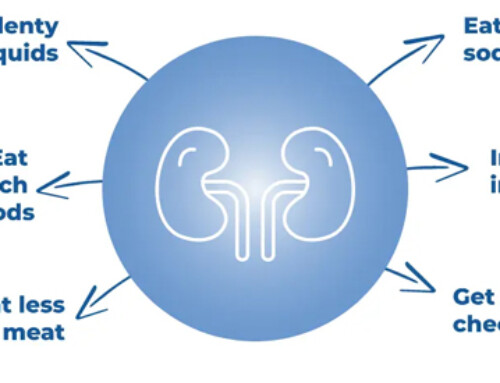Table of Contents
Amyloidosis is another relatively common systemic condition that causes nephrotic syndrome with unique kidney pathology. Approximately 2% of native kidney biopsies will show amyloidosis.
What is amyloidosis?
Amyloidosis is a syndrome where proteins deposit in tissues in a specific misfolded pattern forming what is called beta pleated sheets. These protein deposits result in organ dysfunction.
Renal Manifestations of Amyloidosis
- Nephrotic syndrome. Severe proteinuria (average > 6 grams), often associated with edema and hyperlipidemia.
- May be associated with decreased GFR (CKD which may progress to ESRD)
- The proteinuria is mainly albumin, – link – Proteinuria: What is it and How I Treat | BCNephro, even if there is also light chain proteinuria. This distinguishes amyloidosis from myeloma kidney and other forms of monoclonal gammopathies of renal significance (MGRS) – additional you tube short link – 7 Ways Myeloma affects the Kidney @BCNephro – YouTube
Types of amyloidosis
There are many different types of proteins (both hereditary and acquired) that are amyloidogenic, they have a propensity to form these abnormal deposits resulting in disease.
The three most common types that affect the kidneys are:
- AL (Immunoglobulin light chain) amyloidosis. 86% – Also referred to as primary amyloidosis.
- AA (Serum Amyloid A) amyloidosis. 7% – Also referred to as secondary amyloidosis.
- ALect2 (Leukocyte cell derived chemotaxin factor 2) – 3%
The other most common form of amyloidosis is ATTR (transthyretin) amyloidosis. This type typically causes cardiac amyloidosis and neuropathy, but does not affect the kidneys.
AL (Immunoglobulin light chain) amyloidosis
- Most common cause of renal amyloidosis: 86%
- Associated with monoclonal production of light chain (plasma cell dyscrasia)
- Can be associated with multiple myeloma, but most often there is a low level, indolent monoclonal protein that does not meet criteria for myeloma
- Most often lambda light chains
- Lambda light chains 75-80%
- Kappa light chains 20-25%
- Older patients (age 50-70, mean > 60)
- Male > Female
- Often associated with systemic (extrarenal) manifestations including:
- Cardiac: Restrictive Cardiomyopathy, arrhythmias, orthostatic hypotension
- GI: Hepatosplenomegaly
- Neurologic: Peripheral neuropathy, carpal tunnel syndrome
- Hematologic: Easy bruising (Racoon eyes)
- Musculoskeletal: Macroglossia
AA (Systemic Amyloid A) amyloidosis
- Relatively common cause of renal amyloidosis: 7%
- Serum amyloid A is an amyloidogenic protein, acute phase reactant made by the liver
- Associated with chronic inflammatory states:
- Rheumatoid Arthritis
- Inflammatory bowel disease
- Familial Mediterranean Fever
- Median age 50- 60
- Female > Male
ALect 2 (Leukocyte cell derived chemotaxin factor 2) amyloidosis
- 3rd most common cause of renal amyloidosis: 3%
- Primarily affects kidney and liver
- Predisposition for people of Mexican, Egyptian, Indian, Pakistani and Native American descent
- Median age 60- 70
When to Consider Amyloidosis
Consider Amyloidosis in:
- Patients with Nephrotic Syndrome or Nephrotic Proteinuria
- Over age of 50 (AL)
- With chronic systemic inflammatory conditions (AA) (Rheumatoid Arthritis, Inflammatory Bowel Disease)
- Other systemic manifestations (Cardiac, GI, Hematologic, Neurologic)
- Patients with CKD and Non Nephrotic Proteinuria
- With demographic associated with (ALect 2) (Mexican, Egyptian, Indian, Pakistani and Native American descent)
Diagnosis of Amyloidosis
Initial Serologic Screening
- Serum Free Light Chain (Kappa and lambda with Ratio)
- Serum and urine protein electrophoresis and immunofixation
- AL – Monoclonal (most often lambda light chains) with decreased serum free light chain ratio
- AA – May have polyclonal increase with elevated kappa and lambda light chains and normal/near normal serum free light chain ratio
- Rheumatoid Factor
Renal amyloidosis should be diagnosed by renal biopsy
- Light Microscopy:
- Mesangial Nodular deposition
- Congo red positive (apple green birefringence on polarized light). This is pathognomonic for amyloidosis, but does not distinguish type.
- AL and AA – Glomeruli congo red positive
- ALect 2 – Interstitium congo red positive, variable glomerular and vascular involvement
- Immunofluorescence: Stain for specific amyloid protein
- AL amyloidosis: Restricted pattern for monoclonal light chain, typically lambda.
- AA amyloidosis: Positive for SAA protein
- ALect 2 amyloidosis: Laser microdissection and mass spectrometry
- Electron Microscopy:
- Amyloid fibrils – 8-12 nm in diameter
- There are other fibrillar kidney diseases (Fibrillary and Immunotactoid GN). The fibrils in these conditions are of a larger diameter.
Treatment of Amyloidosis
Treatment is based on the underlying cause of the amyloidogenic protein.
AL amyloidosis
- Treatment of monoclonal protein with a combination of:
- Daratumumab/hyaluronidase (Darzalex Faspro)
- Bortezomib
- Cyclophosphamide
- Dexamethasone
AA amyloidosis
- Treatment of underlying inflammatory condition.
- Familial Mediterranean Fever – Colchicine
- Rheumatologic disorders – Anticytokine Therapy
- TNF alpha antagonists
- Interleukin 1 receptor antagonist – anakinra
- Interleukin 6 receptor antibody – tocilizumab
ALect 2 amyloidosis
- No specific treatment
- Supportive care (Renin angiotensin system blockers, blood pressure control)
Summary
Amyloidosis is an important consideration in the evaluation of proteinuria, particularly in patients with nephrotic syndrome over the age of 50 with systemic disease.



